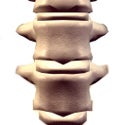Scoliosis
Scoliosis is an abnormal curvature of the spine that results in an “S-shaped” configuration down the back.
For patients who experience lasting pain from scoliosis, WakeMed’s skilled orthopaedists can capitalize on both medical and surgical options — using the latest advancements and innovations for treatment.

Causes of Scoliosis
Many cases of scoliosis can be attributed to congenital conditions. Degenerative spinal conditions and spinal tumors have no identifiable underlying cause.
Symptoms of Scoliosis
For some people, scoliosis produces no symptoms, but, for others, when the S-shaped curve worsens, patients may feel both back and leg pain.
If spinal stenosis or a tumor is a cause, patients may also experience weakness.
Diagnosing Scoliosis
Our orthopaedists will discuss your history of pain, take a detailed history of symptoms and conduct a thorough physical examination.
We may order diagnostic scans, such as X-rays, myelograms, magnetic resonance imaging (MRI) or computed tomography (CT) scans to identify the full degree of spinal curvature. Annual X-rays can help monitor any curve changes over time.
Treating Scoliosis
Using a brace has proven effective at treating scoliosis in some pediatric cases.
If lower back and leg pain is present, physical therapy or epidural steroid injections can offer relief.
If additional nerve problems appear or if the curvature progresses rapidly, surgery may be required. Recent surgical technique advancements — including smaller incisions and the use of computer-assisted navigation systems — have made surgical procedures less invasive.
Make an Appointment
We welcome new patients. If you’d like to meet with one of WakeMed’s orthopaedists about scoliosis, please make an appointment by calling us at 919-232-5020.